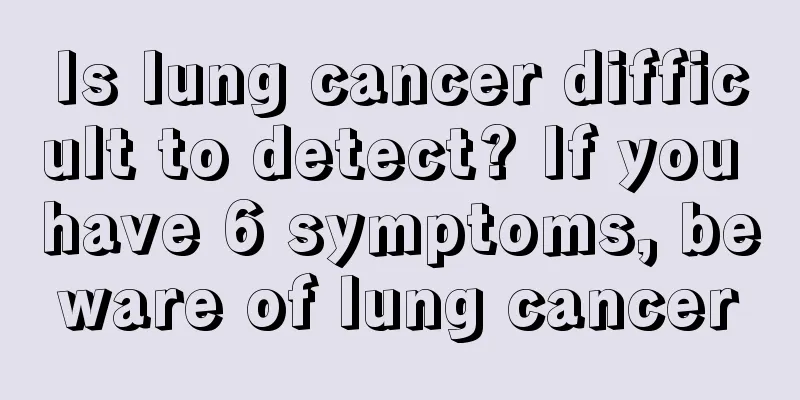Treatment of lung cancer

|
Lung cancer is the most common primary malignant lung tumor. The treatment of lung cancer includes chemotherapy, radiotherapy, radical treatment, low-toxic chemotherapy + traditional Chinese medicine treatment, surgical treatment, chemotherapy and traditional Chinese medicine treatment. Chemotherapy In recent years, the role of "chemotherapy" in lung cancer is no longer limited to patients with advanced lung cancer who cannot undergo surgery, but is often included in the comprehensive treatment plan for lung cancer as a systemic treatment. Chemotherapy inhibits the bone marrow hematopoietic system, mainly the decline of white blood cells and platelets, thereby inhibiting the unlimited proliferation and metastasis of cancer cells and other terrible lesions. (I) Chemotherapy for small cell lung cancer Due to the biological characteristics of small cell lung cancer, it is generally recognized that chemotherapy should be the first choice except for a few patients with sufficient evidence showing no intrathoracic lymph node metastasis. 1. Indications (1) Patients with small cell lung cancer confirmed by pathology or cytology; (2) KS score is 50-60 points or above; (3) Those with an expected survival time of more than one month; (4) Persons aged ≤70 years. 2. Contraindications (1) Elderly or cachectic patients; (2) Those with severe heart, liver and kidney dysfunction; (3) Poor bone marrow function with white blood cells below 3×10^9/L and platelets below 80×10^9/L (direct count); (4) There are complications and infection, fever, bleeding tendency, etc. (II) Chemotherapy for non-small cell lung cancer Although there are many effective drugs for non-small cell lung cancer, the efficacy is low and complete remission is rarely achieved. 1. Indications: (1) Patients with stage III disease confirmed by pathology or cytology to have squamous cell carcinoma, adenocarcinoma or large cell carcinoma who are not suitable for surgery, and patients with postoperative recurrence and metastasis or stage III disease who are not suitable for surgery for other reasons; (2) Patients with the following conditions after surgical exploration and pathological examination: ① residual lesions; ② intrathoracic lymph node metastasis; ③ cancer thrombi in lymphatic vessels or thrombi; ④ poorly differentiated cancer; (3) Patients with pleural or pericardial effusion require local chemotherapy. 2. Contraindications: Same as small cell carcinoma. Radiation therapy 1. Treatment principles Radiotherapy is the best for small cell carcinoma, followed by squamous cell carcinoma, and the worst for adenocarcinoma. However, small cell carcinoma is prone to metastasis, so large-area irregular field irradiation is often used. The irradiation area should include the primary lesion, the supraclavicular area on both sides of the mediastinum, and even the liver and brain, and should be supplemented with drug treatment. Squamous cell carcinoma is moderately sensitive to radiation, and the lesions are mainly local invasion, and metastasis is relatively slow, so radical treatment is often used. Adenocarcinoma is less sensitive to radiation and is prone to blood metastasis, so simple radiotherapy is rarely used. (ii) There are many radiation complications, which may even cause partial functional loss; for patients with advanced tumors, the effect of radiotherapy is not perfect. At the same time, patients with poor physical condition and older age are not suitable for radiotherapy. (III) Indications for radiotherapy are divided into radical treatment, palliative treatment, preoperative radiotherapy, postoperative radiotherapy and intracavitary radiotherapy according to the purpose of treatment. Treatment of lung cancer 1. Radical treatment (1) Early-stage cases with surgical contraindications or refusal to undergo surgery, or IIIa cases with lesions limited to 150 cm; (2) The heart, lung, liver and kidney functions are basically normal, the white blood cell count is greater than 3×10^9/L, and the hemoglobin is greater than 100g/L; (3) KS ≥ 60 points: A careful plan should be made in advance and strictly implemented. The treatment plan should not be changed easily. Even if there is a radiation reaction, the goal should be to cure the tumor. 2. Palliative treatment: Its purpose varies greatly. There are palliative treatments that are close to radical treatment to relieve patients' pain, prolong life, and improve quality of life; there are also palliative treatments that only relieve symptoms of advanced patients and even cause comfort, such as pain, paralysis, coma, shortness of breath, and bleeding. The number of irradiation times for palliative treatment can range from a few times to dozens of times, depending on the specific situation and equipment conditions. However, the principle must be not to increase the patient's pain. If there is a large radiation reaction or a decrease in the KS score during treatment, the treatment plan can be modified as appropriate. 3. Preoperative radiotherapy: It aims to improve the surgical resection rate and reduce the risk of tumor spread during surgery. For patients who are estimated to have no difficulty in surgical resection, high-dose, less-fractionated radiotherapy can be used before surgery; if the tumor is huge or has external invasion, and it is estimated that surgical resection will be difficult, conventional fractionated radiotherapy can be used. The time between radiotherapy and surgery is generally about 50 days, and the longest time should not exceed three months. 4. Postoperative radiotherapy: It is used for cases where the preoperative estimate is insufficient and the tumor is not completely removed during surgery. Silver clips should be placed on the local residual lesions to facilitate accurate positioning during radiotherapy. 5. Intracavitary short-distance radiotherapy: It is suitable for cancer lesions confined to large bronchi. Afterloading technology can be used to place the catheter at the bronchial lesion through a fiberoptic bronchoscope. Iridium (192Ir) can be used for short-distance radiotherapy in combination with external irradiation to improve the treatment effect. Low-toxic chemotherapy + traditional Chinese medicine treatment The best treatment for inoperable lung cancer is chemotherapy. It is reported that chemotherapy is still the main means of treating lung cancer when there are no surgical indications. The main reasons for the continued increase in the incidence of lung cancer are smoking, coupled with the influence of environmental factors, including population aging, urban industrialization and modernization, rural urbanization and modernization, environmental pollution, unhealthy lifestyles, and medical modernization. In pathology, lung cancer is divided into non-small cell lung cancer and small cell lung cancer, of which non-small cell lung cancer accounts for about 85% of lung cancer. At present, the treatments for lung cancer include surgery, chemotherapy, radiotherapy, traditional Chinese medicine, molecular targeted therapy, etc. In particular, surgical procedures are minimally invasive. For example, lung resection surgery may have required a large incision of 30 to 40 centimeters in the past, but now a small incision of about 10 centimeters is sufficient. The treatment for early lung cancer is surgery, but nearly 80% of patients are in the middle and late stages when diagnosed, and cancer cells have metastasized. At this time, the best treatment for lung cancer is chemotherapy throughout the country. Chemotherapy is currently the main means of treating advanced lung cancer. It refers to the use of drugs that can kill tumor cells for treatment. According to experts, some patients do not understand the metastatic nature of tumors and think that surgical removal of the tumor is a cure, which often delays subsequent treatment. Some patients have heard that chemotherapy has serious toxic side effects and are unwilling to receive treatment or do not receive standardized treatment. In fact, the toxicity of many new chemotherapy drugs has been greatly reduced, and side effects such as hair loss and vomiting have also been greatly reduced. It can effectively alleviate the toxic and side effects after chemotherapy. "Low-toxic chemotherapy + Chinese medicine conditioning can effectively prevent tumor metastasis and recurrence. Because Chinese medicine can improve the patient's physical function and increase their own immunity. Combined with the principles of traditional Chinese medicine, the treatment of lung cancer is even more effective. Because the early symptoms of lung cancer are not obvious and there is a lack of effective early diagnosis methods, lung cancer patients are mostly in the late stage when clinically diagnosed. The best treatment for lung cancer, low-toxic chemotherapy + Chinese medicine treatment can spread throughout the body, which can prolong the patient's life and improve the quality of life. Surgical treatment The treatment of lung cancer should be based on surgery or strive for surgery except for stages IIIb and IV, and combined treatment with radiotherapy, chemotherapy and immunotherapy should be added according to different stages and pathological tissue types. Regarding the survival period after lung cancer surgery, domestic reports have shown that the three-year survival rate is about 40% to 60%; the five-year survival rate is about 22% to 44%; and the surgical mortality rate is below 3%. (I) Surgical indications Those with the following conditions can generally undergo surgical treatment: 1. No distant metastasis, including solid organs such as liver, brain, adrenal glands, bones, extrathoracic lymph nodes, etc.; 2. The cancerous tissue has not invaded or spread to adjacent organs or tissues in the chest, such as the aorta, superior vena cava, esophagus, and cancerous pleural effusion; 3. Those without severe cardiopulmonary dysfunction or recent onset of angina; 4. Those without severe liver or kidney diseases and severe diabetes. Patients with the following conditions should generally undergo surgery with caution or require further examination and treatment: (1) Elderly people with poor cardiopulmonary function; (2) Except for stage I, small cell lung cancer should be treated with chemotherapy or radiotherapy first, and then determine whether it can be treated surgically; (3) In addition to the primary lesion, X-ray findings also reveal several suspicious metastases in the mediastinum. At present, the academic community has relaxed the indications for surgical treatment of lung cancer. For some patients with invasion of the major thoracic blood vessels and distant isolated metastases, as long as their physical conditions permit, some scholars believe that surgery can be performed, and relevant exploration and research have been conducted. (II) Indications for exploratory thoracotomy Patients with no contraindications to surgery and who are clearly diagnosed with lung cancer or highly suspected of having lung cancer can choose a surgical procedure based on the specific situation. If the lesion is found during the operation to be beyond the resectable range but the primary cancer is still resectable, the primary lesion should be removed. This is called reduction surgery. However, in principle, a complete lung resection is not performed to allow for other postoperative auxiliary treatments. 3. Choice of surgical procedure for lung cancer According to the 1985 international lung cancer staging system, patients with stage I, II, and III lung cancer who do not have surgical contraindications can be treated with surgery. The principle of surgical resection is to completely remove the primary lesion and the lymph nodes in the chest that may have metastasized, and preserve normal lung tissue as much as possible. Pneumonectomy should be performed with caution. 1. Local resection: refers to wedge-shaped cancer block resection and lung segment resection. For patients with very small primary cancer, the elderly and the weak, with poor lung function, or with well-differentiated cancer and low malignancy, local lung resection can be considered; 2. Lobectomy: Lobectomy is a treatment option for isolated peripheral lung cancer that is confined to one lobe without obvious lymph node enlargement. If the tumor involves two lobes or the middle bronchus, upper middle lobe or lower middle lobe resection may be performed; 3. Sleeve lobectomy: This procedure is mostly used for lung cancer in the right upper and middle lobes. If the tumor is located in the lobar bronchus and involves the opening of the lobar bronchus, sleeve lobectomy can be performed. 4. Pneumonectomy: When the lesions are extensive and cannot be removed by the above methods, pneumonectomy can be carefully considered; 5. Carina resection and reconstruction: When the tumor exceeds the main bronchus and involves the carina or tracheal side wall but does not exceed 2 cm: ① Carina resection and reconstruction or sleeve pneumonectomy can be performed; ② If one lobe of the lung can be retained, try to retain it. The surgical method can be determined according to the situation at the time. 4. Surgical treatment of recurrent or recurrent lung cancer 1. Although surgery can remove the tumor, there may still be residual cancer, regional lymph node metastasis, or cancer thrombus in the blood vessels, etc., and the chance of recurrence and metastasis is very high. Treatment of multiple primary lung cancer: For patients diagnosed with multiple primary lung cancer, the treatment principle is to treat the second primary lesion. 2. Treatment of recurrent lung cancer: Recurrent lung cancer refers to the recurrence of cancer foci within the original surgical scar or intrathoracic cancer foci related to the primary foci. The treatment principle should be to determine the scope of surgery based on the patient's cardiopulmonary function and whether the tumor can be removed. Chinese medicine treatment This disease belongs to the category of "lung accumulation" in clinical Chinese medicine. It is mainly believed that it is due to the deficiency of vital energy, imbalance of yin and yang, and the six evils taking advantage of the weakness to enter the lungs, and the evils stagnate in the lungs, leading to lung dysfunction, stagnation of lung qi, dysfunction of the descending and ascending functions, unfavorable qi mechanism, obstruction of blood circulation, and failure of body fluid to transport and distribute. The body fluid gathers into phlegm, phlegm condenses and qi stagnates, and blood stasis blocks the collaterals, so phlegm, qi, blood stasis and toxins are glued together, forming lung masses over time. Therefore, lung cancer is a disease that is systemic and local. The deficiency of lung cancer is mostly yin deficiency and qi and yin deficiency; the reality is nothing more than the pathological changes of qi stagnation, blood stasis, phlegm coagulation, and toxin accumulation. |
<<: What should we pay attention to in daily care of lung cancer?
Recommend
Can blood routine tests reveal anemia?
Nowadays, physical health is the most important t...
What should I pay attention to after thyroid cyst surgery
Thyroid cyst is a type of thyroid disease. Some y...
It is very simple to prevent liver cancer, just follow the "four no-eating" principle
Liver cancer is the most common "health kill...
Methods for supplementing essential nutrients for the human body
We all know that the basic life activities of the...
What foods should I eat to recover faster from chemotherapy?
Chemotherapy is a common cancer treatment method ...
What is the difference between silky eyebrows and powder eyebrows?
Powder eyebrows are also known as subtle intracel...
What to do if your feet are swollen due to varicose veins
Varicose veins are a very common disease in daily...
Can I have sex during pregnancy?
Many couples have sex during pregnancy. Here we w...
How to use disposable masks
Although disposable masks are very convenient to ...
Blood blisters on the penis
If a man finds blood blisters on his penis during...
Symptoms of tension headache
Headache is a very common disease in our life, an...
Excessive sweating can easily cause hair loss
Hair has a close relationship with the body. If y...
What harm does smog do to the body
With the rapid increase in the number of private ...
Foot joint pain on rainy days
Many older people are particularly prone to joint...
How to squeeze out blackheads quickly
Blackheads are a relatively common skin problem, ...









